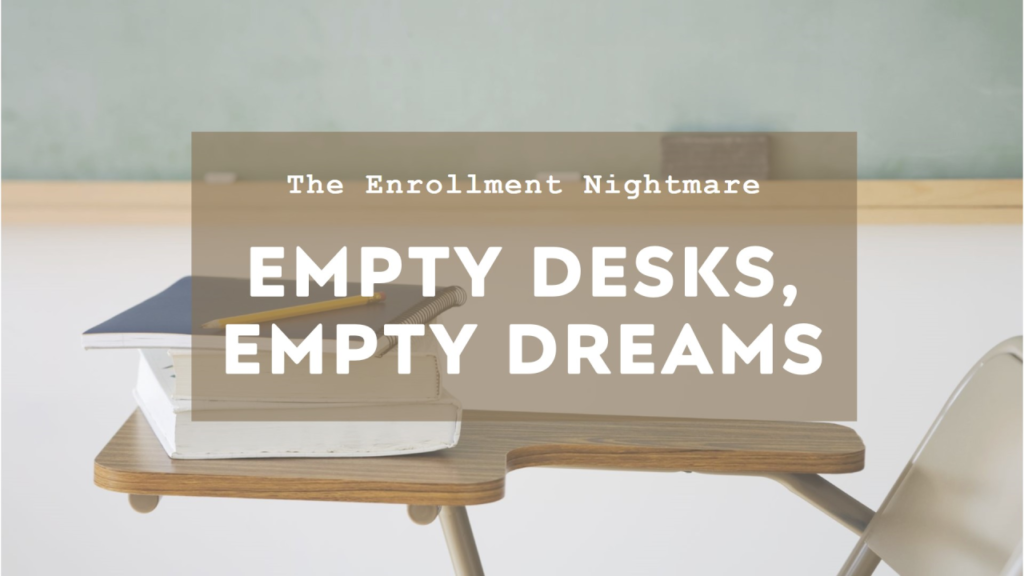Four Marketing Techniques: Are They in Your Toolbox?
During over 30 years of learning about marketing, I’ve run across a lot of techniques. I still use them in various ways to create success in enrollment management. As enrollment management professionals, it’s essential to employ strategies that not only showcase your school’s strengths but also foster meaningful connections with prospective families. This article explores four marketing techniques that can help you develop a deeper understanding of your prospects and build lasting relationships. 1. Problem-Based Marketing Problem-based marketing focuses on identifying and addressing the specific challenges that your target audience faces. For K-12 private schools, this approach involves: Conducting surveys and focus groups with current parents and students to identify common pain points in education Creating content that addresses these challenges and positions your school as the solution Developing targeted campaigns that speak directly to parents’ concerns, such as academic rigor, personalized attention, college preparation, and most importantly transformations expected. Example: If parents in your area are concerned about large class sizes in public schools, create a campaign highlighting your school’s small class sizes and personalized attention. Don’t assume they know the extent in which the smaller size will be valuable. Spell it out for them. 2. Image Marketing Image marketing is all about crafting and maintaining a strong, positive perception of your school in the minds of prospective families. Key strategies include: Developing a consistent brand identity across all marketing materials Showcasing your school’s unique culture, values, and achievements Utilizing high-quality visuals and storytelling to create an emotional connection with prospects Respond to negative images in a positive way, i.e. Use your stakeholders to counter the negative. Example: Create a video series featuring student success stories, highlighting how your school’s unique programs have contributed to their growth and achievements. 3. Segmentation Marketing Segmentation marketing involves dividing your prospect pool into distinct groups based on specific characteristics, allowing for more targeted and personalized outreach. Consider segmenting by: Grade level (elementary, middle, high school) Academic interests (STEM, arts, athletics) Geographic location Family values or priorities Example: Develop separate email campaigns for families interested in your STEM program versus those more focused on arts and humanities, highlighting relevant faculty, facilities, and student achievements in each area. 4. Database Marketing Database marketing leverages the power of data to create highly personalized marketing efforts. This technique involves: Maintaining a comprehensive database of prospect information Tracking interactions and engagement with your school Using data analytics to identify trends and tailor your marketing efforts Example: Use your database to identify which families have attended multiple open houses but haven’t applied, then create a personalized follow-up campaign addressing potential concerns or questions they may have. Implementing These Techniques To effectively use these marketing techniques, consider the following steps: Assess your current marketing efforts: Evaluate which techniques you’re already using and identify areas for improvement. Set clear goals: Determine what you want to achieve with your marketing efforts, such as increasing applications, improving yield rates, or attracting students from specific demographics. Develop a comprehensive strategy: Create a marketing plan that integrates all four techniques, ensuring they work together cohesively. Invest in the right tools: Implement a robust Customer Relationship Management (CRM) system to support your database marketing efforts and track the effectiveness of your campaigns. Train your team: Ensure that all staff members involved in enrollment management understand these techniques and how to apply them effectively. Continuously refine your approach: Regularly analyze the results of your marketing efforts and adjust your strategies based on what works best for your school and target audience. By incorporating these four marketing techniques into your enrollment management strategy, you’ll be better equipped to understand your prospects, build meaningful relationships, and ultimately attract the right students to your K-12 private school. Remember, the key to success lies in consistently delivering value and maintaining open lines of communication with prospective families throughout their decision-making journey.
Four Marketing Techniques: Are They in Your Toolbox? Read More »










